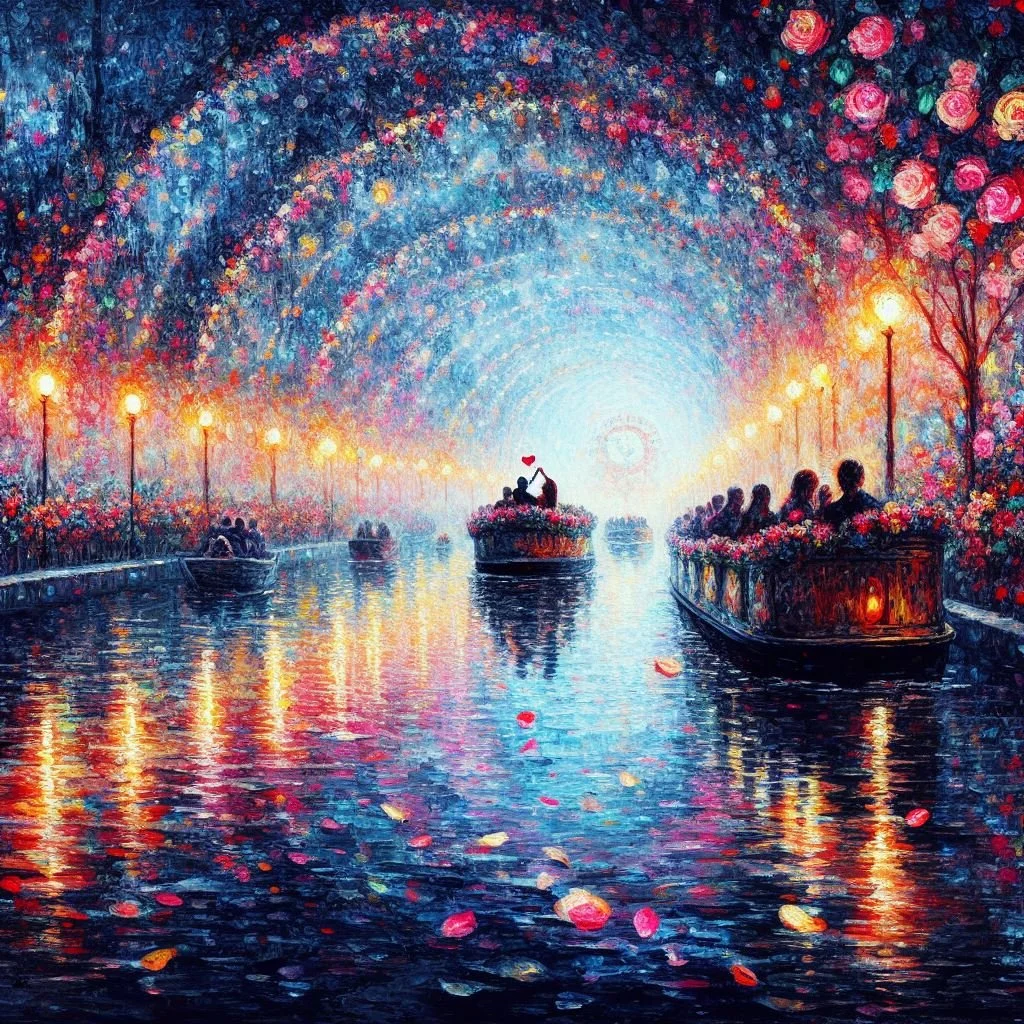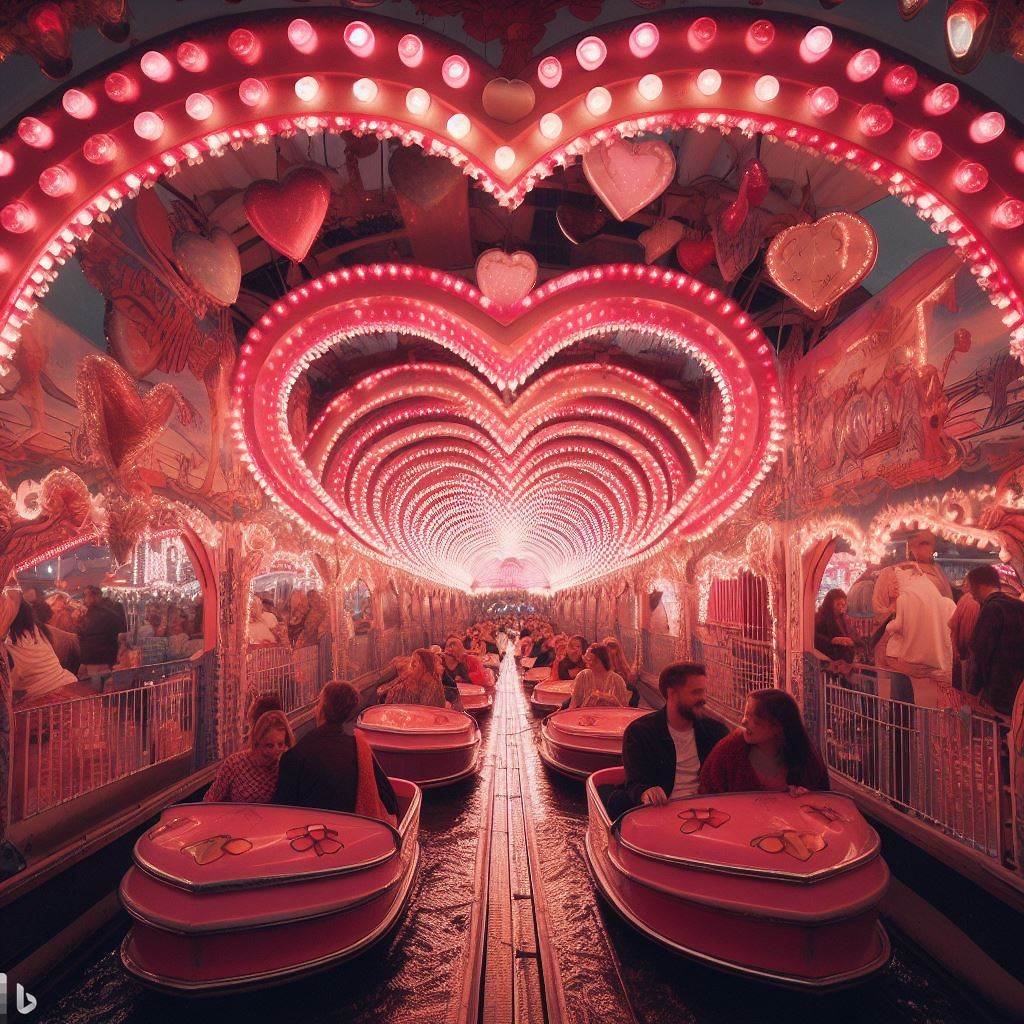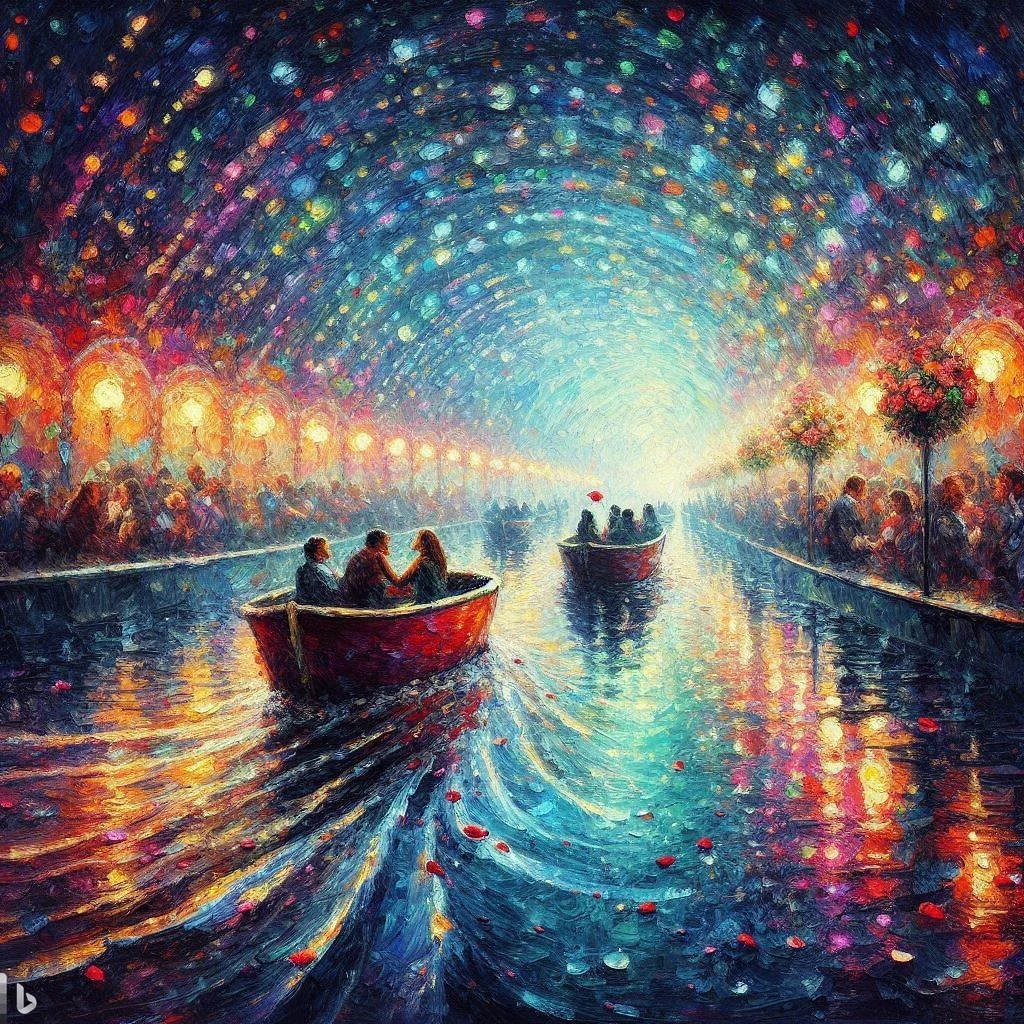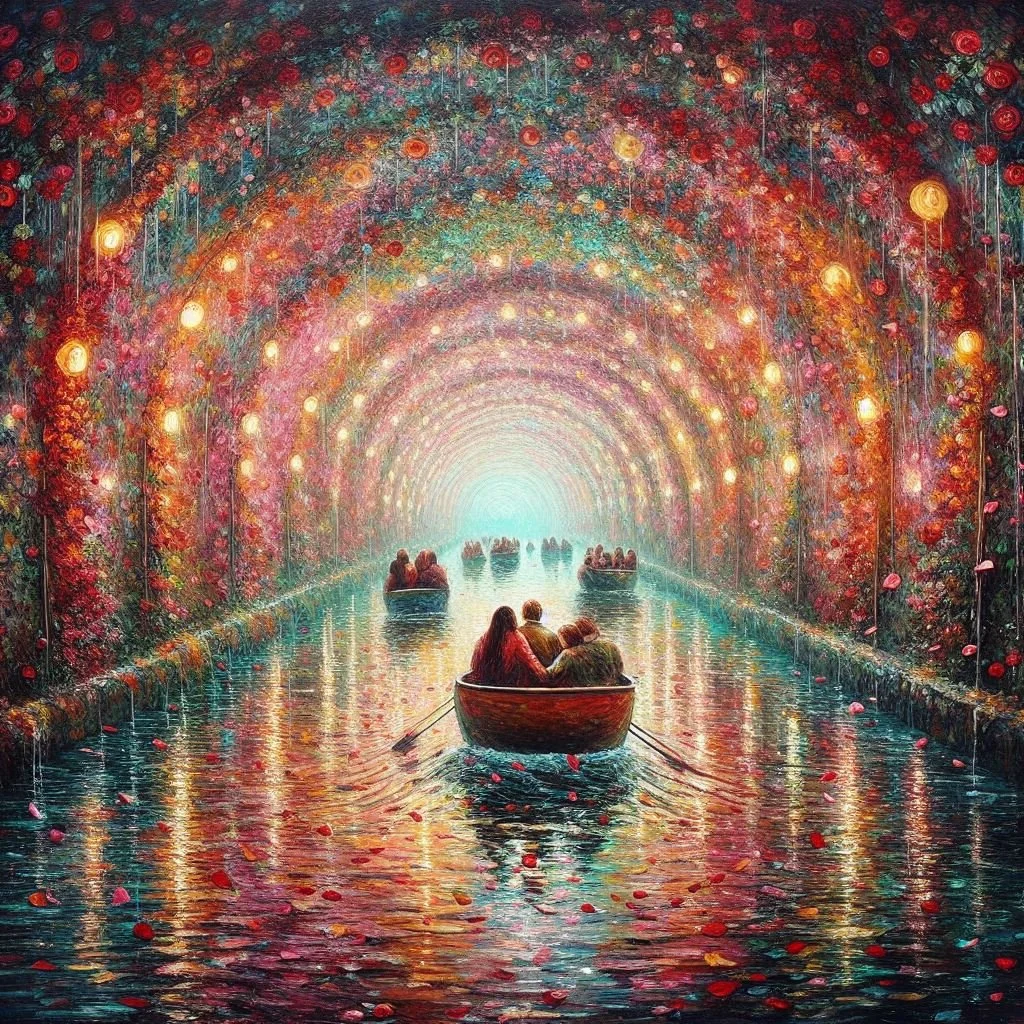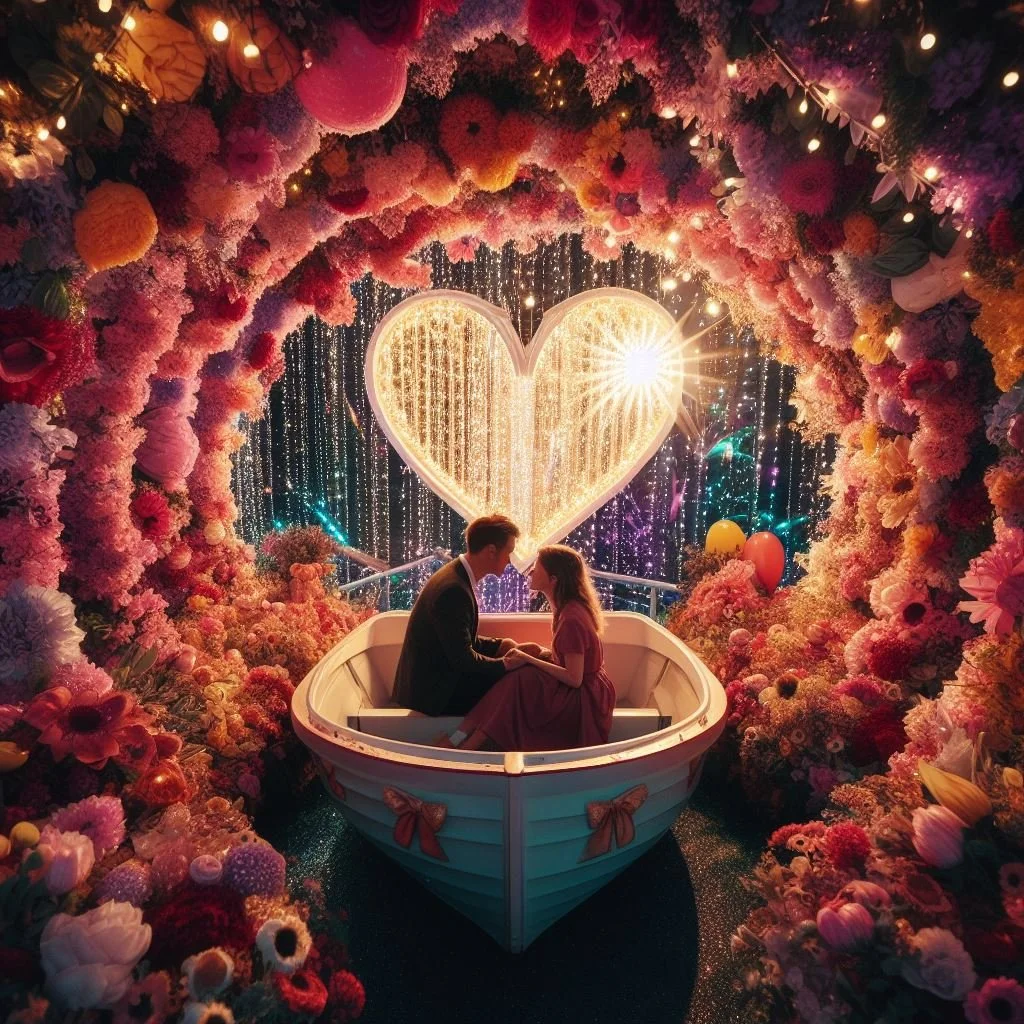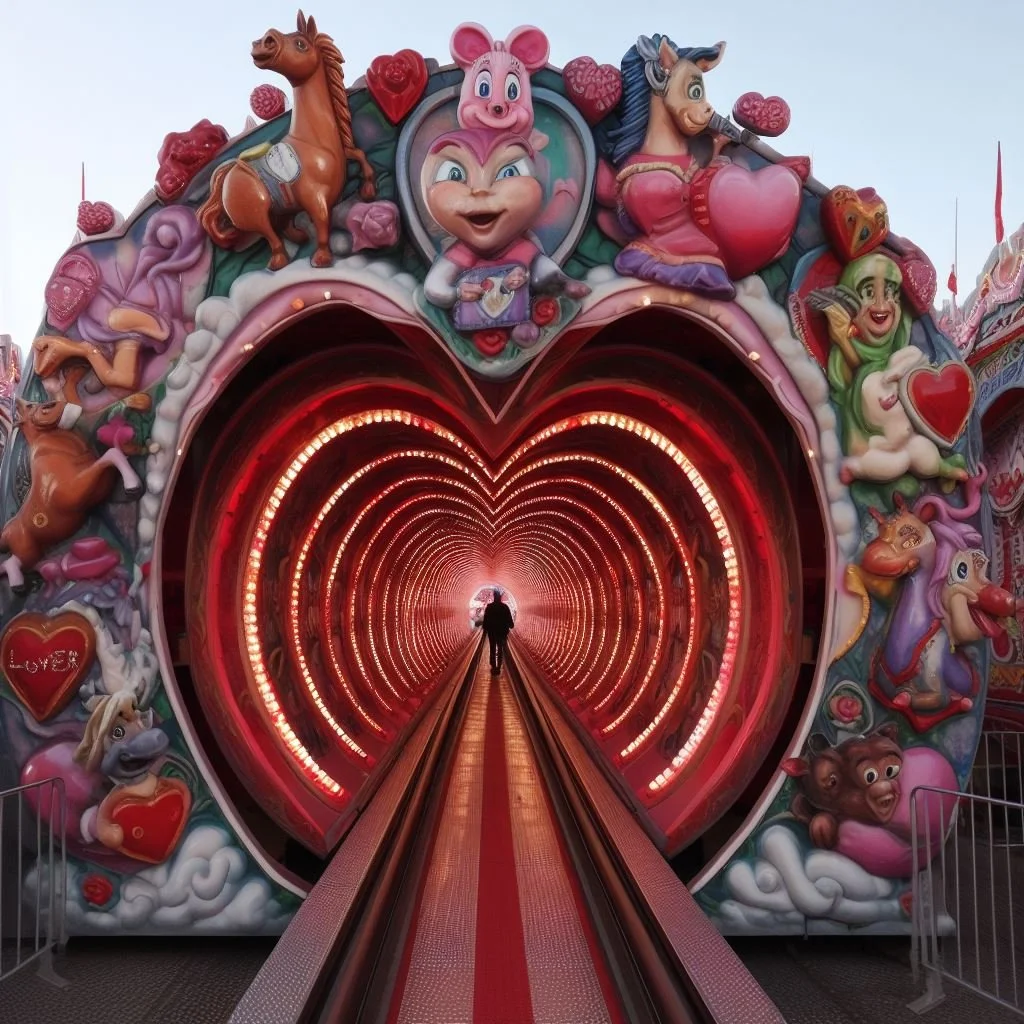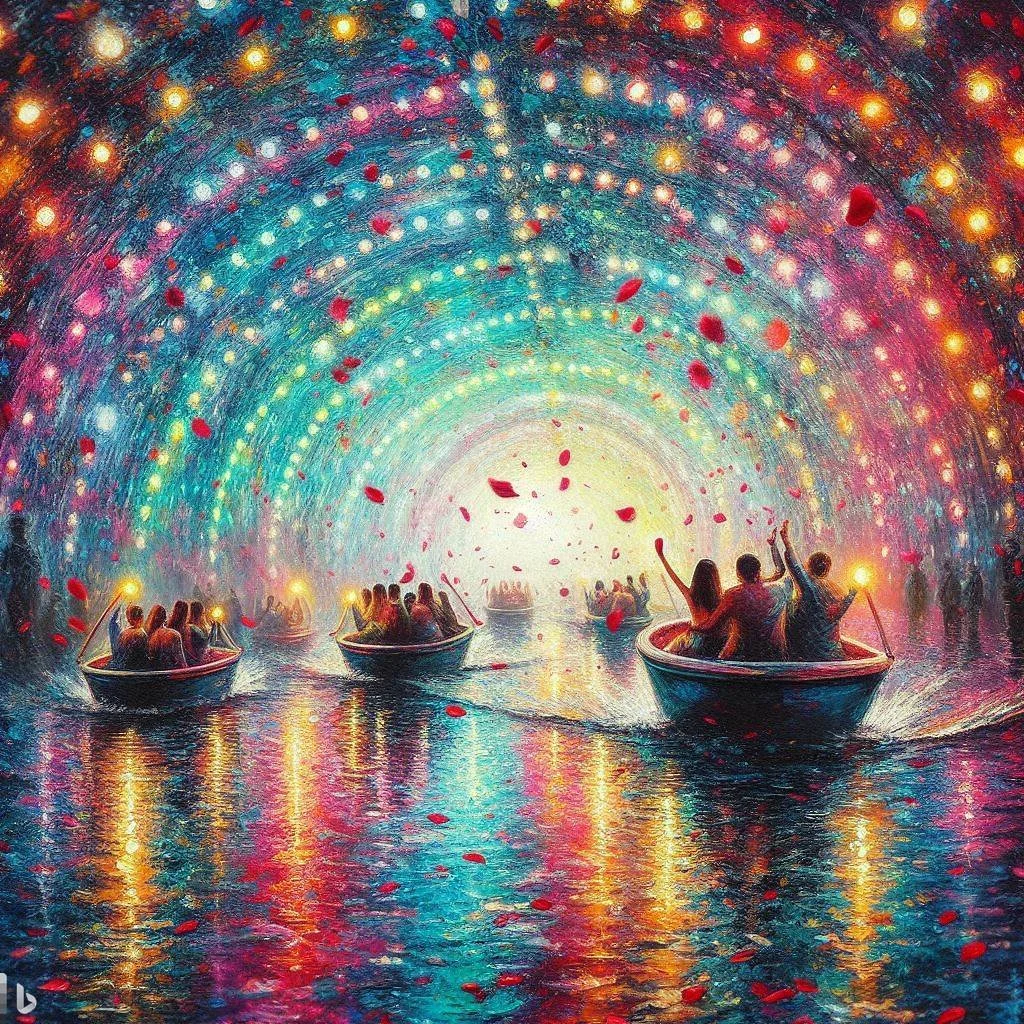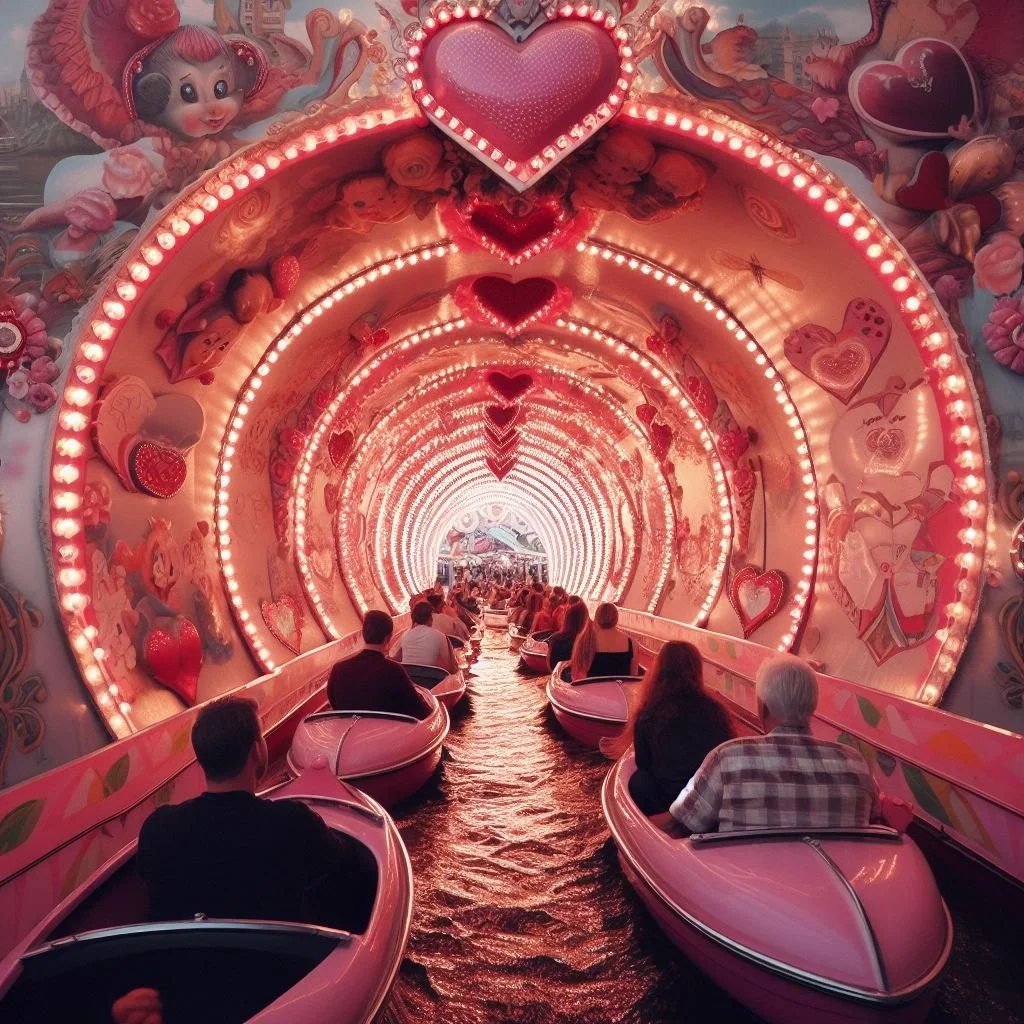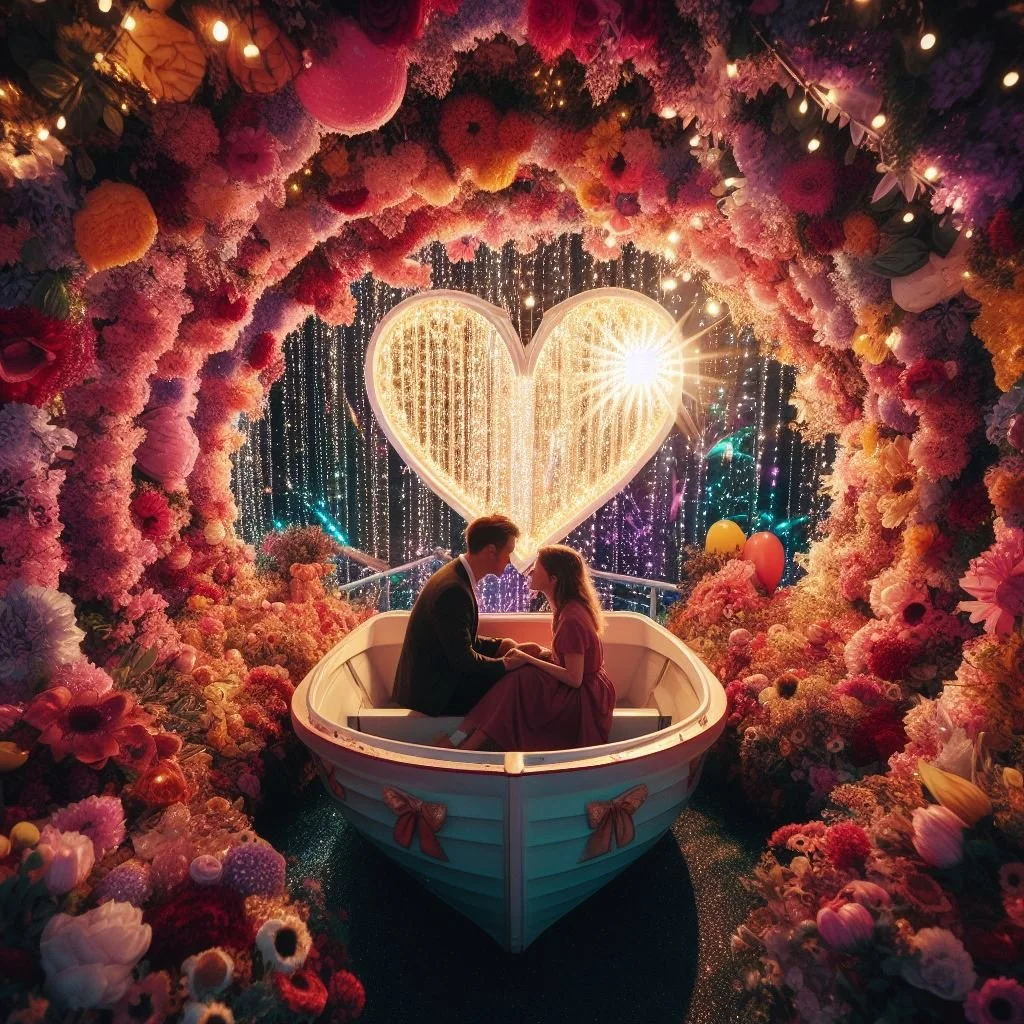
Tunnel-of-Love
Tunnel-of-Love Brought Back With A Modern Twist. Romantic/ Scary
Our Modern Tunnel-of-Love combines romantic and scary for the most scientifically optimal ride to get her into your arms. spice up your wedding or special occation today!
exerpt of a daily news article in the 1950s on the topic of the modern tunnel of love vs the old scary original version “Research has shown that the snarls, howls, and groans of the hideous sights along the way, while palpably phony, will cause the female to precipitate herself into the male's arms,”The Daily News humorously explained, leftover halloween props were often more romantic than pink-and-red decor. the 1950 article reads. “Her fright is usually as phony as the hazards of the course, but it serves a useful purpose”. When two characters are about to get together on a television show, they may find themselves at an amusement park. There they stumble upon the Tunnel of Love—a boat ride that forces passengers to share a snug seat as they float through a dimly-lit enclosure. What follows has become a pop culture cliché: The would-be couple blushes as they squeeze into a swan-shaped vessel built for two. As they drift past cardboard cupids and neon hearts, their hands inch closer to each other’s in the dark. When they emerge from the tunnel several minutes later, the pair looks much more comfortable than when they entered.
The Tunnel of Love has been a TV trope for decades. Baby Boomers saw it in Scooby-Doo, Gen Xers saw it in The Simpsons, and Millennials saw it in Rugrats. Even younger generations have some familiarity with the concept, with Tunnel of Love scenes appearing in 2010s cartoons like The Loud House and Gravity Falls. The ride is ubiquitous in media, though if you ask anyone under the age of 70 if they’ve seen it in real life, they’ll likely say no.
You wouldn’t be blamed for thinking the attraction is a Hollywood invention, like flying cars or human-sized air vents. But the ride was very real 100 years ago. The Tunnel of Love exploded in popularity in the early 20th century, and after serving an important function for courting couples for several years, it disappeared in what seemed like an instant.

